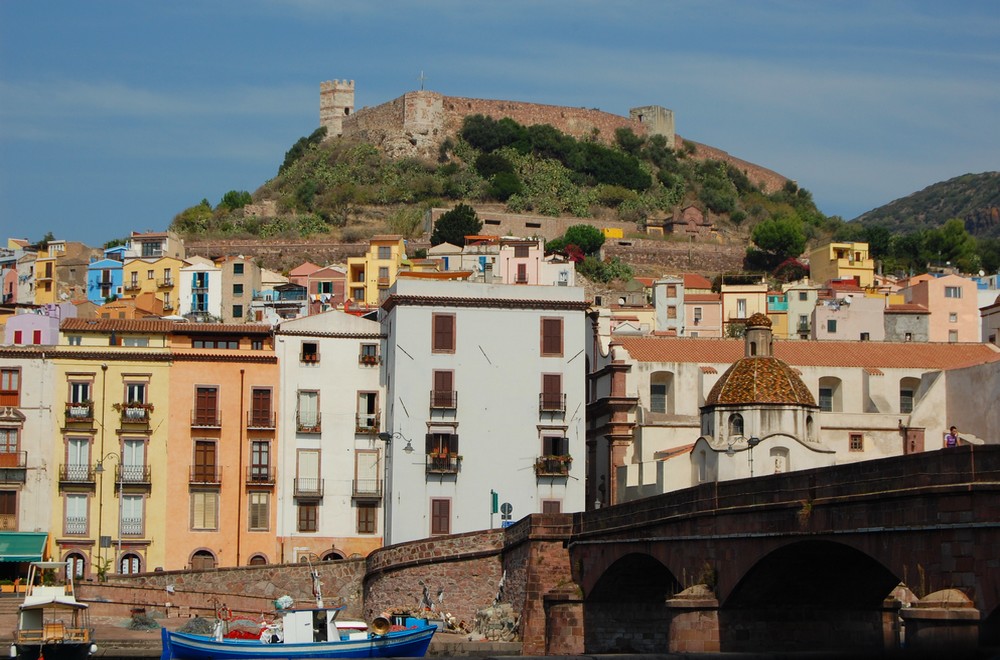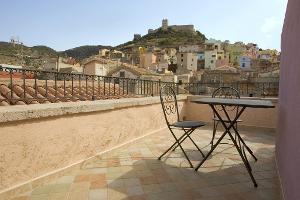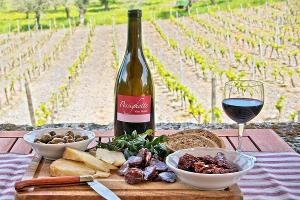In Bosa, a medieval village located in the Planargia region on the north-western coast of Sardinia, a unique carnival takes place in which merriment and fantasy are the absolute protagonists. Also known by its dialectal name Karrasegare ‘osincu, the Carnival of Bosa begins, as in the rest of Sardinia, at the end of January with the feast of Saint Anthony and continues in February, starting as early as the days before Maundy Thursday. During these days, groups of masked people circulate around the town and go from house to house, performing cheerful traditional and satirical songs, to ask for questua, a small offering for the celebration. On Maundy Thursday, the actual festivities begin with the masked parade and decorated floats through the town streets. Saturday sees the so-called “Festa delle Cantine“, where visitors are welcomed and invited to taste a glass of wine or local Malvasia. On Sunday, the festival continues with pancake tasting, street theatre performances and a masquerade. The most traditional day of celebration, however, is Shrove Tuesday when, starting in the morning, the satirical masks, the Giolzi and S’Attitadora, parade through the town. Carnival in Bosa is an important event and all its days are enriched by cultural and musical entertainment. The celebration finally ends the following weekend with the awarding of prizes to the floats and the most beautiful masks and with the “pentolaccia” (a cauldron) in the main square.
Giolzi e S’Attittadora, the main masks of the Bosa Carnival
The traditional masks of the Bosa Carnival are the Giolzi and S’Attittadora. The Giolzi are plastic or cloth puppets representing a starving infant, often dismembered. S’Attitadora, dressed in black women’s clothes symbolising mourning and with her face painted black, during the parade addresses traditional funeral laments to the puppet and asks the undisguised women for “unu Tikkirigheddu de latte” (a drop of milk) for the abandoned and dying child, which is nothing but a metaphor for Carnival coming to an end. At dusk, Carnival changes scene, all the black masks hole up at home and make way for the white masks wearing a sheet as a cloak and a white hood on top. The white masks parade through the village streets with a white lamp in their hands and represent the souls of the Giolzi as a metaphor for the now-dead Carnival. The festival ends with a musical evening and a large bonfire in which the Carnival puppets are burnt.
What to see in Bosa beyond the Carnival, between bridges over the river and legends of the Middle Ages
Bosa‘s privileged position along the river Temo, the only navigable river in Sardinia that is not too far from the sea, has meant that it has played a very important role since ancient times. That is why during your trip to this picturesque village it will be fascinating to see many traces of its past and history. First and foremost, the Malaspina Castle that dominates the town from the top of its hill. Like any self-respecting castle, this one too is shrouded in a mysterious legend. The story goes that the marquis who owned the manor built a subway to the cathedral so that his wife could go to church without being seen by other men. In a jealous rage, he cut off her fingers and wrapped them in a handkerchief, which he later pulled out in front of his friends who saw them. Shocked by this vision they imprisoned the marquis and, again according to legend, the rocks of the castle were the petrified fingers of his poor wife. Surrounding the fortress is the entire medieval centre, one of the largest and most characteristic historical centres in Sardinia. The elegant historical buildings, the Cathedral of the Immacolata, the churches and the charming narrow streets make Bosa a charming village. Not to be outdone, however, are the colourful fishermen’s boats on the river Temo and its old bridge, which has been included in several rankings as one of the 30 most beautiful bridges in Italy. Finally, on the river bank, don’t forget to visit the Antiche Concerie, an important example of Sardinian industrial architecture that was declared a national monument in 1989.
Where to sleep in Bosa
Whether you are looking for an intimate accommodation away from the hustle and bustle of the town or an accommodation right in the centre that allows you to experience the social life of the town, Bosa offers its visitors some really nice accommodations. Below we have selected for you 3 establishments where you can stay to enjoy your holiday in complete relaxation:
- The B&b Pessighette is a charming establishment surrounded by olive groves and vineyards and ideal if you’re looking for a private place to rest after exploring the northwest coast all day.
- The Albergo Diffuso Corte Fiorita is located in various buildings throughout the historic centre of Bosa. Staying in this establishment will allow you to experience town life like a true local, without giving up the comfort typical of Sardinian hospitality.
- The Corte Fiorita flats, located in the old town centre, are suitable for a family of 4 who want to spend their holidays in a well-kept, comfortable environment but in complete independence.
 it
it de
de nl
nl en
en fr
fr




